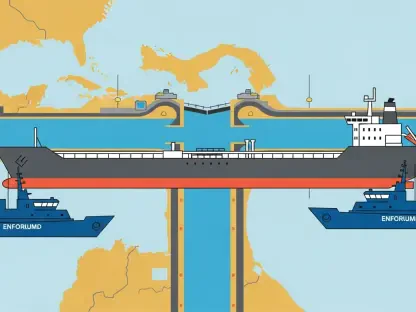I’m thrilled to sit down with Christopher Hailstone, a seasoned expert in energy management and renewable energy, with a deep understanding of electricity delivery systems. As our Utilities expert, Christopher offers unparalleled insights into grid reliability and security. Today, we’re diving into the Southwest Power Pool’s groundbreaking proposal to merge transmission planning and generator interconnection processes, exploring how this could reshape the energy landscape across a vast region. Our conversation touches on the motivations behind this change, the challenges of meeting surging demand, the intricacies of cost allocation, and the potential impacts on grid efficiency and future energy projects.
Can you start by giving us an overview of what the Southwest Power Pool does and the region it serves?
Absolutely. The Southwest Power Pool, or SPP, is a regional transmission organization that manages the electric grid across a large swath of the central United States. Their footprint stretches from the Texas Panhandle all the way up to North Dakota, covering parts of 14 states. SPP’s primary role is to ensure the reliability of the power grid in this region by coordinating the flow of electricity, balancing supply and demand in real time, and planning for future transmission needs. They act as a kind of air traffic controller for electricity, making sure power gets where it needs to go efficiently and safely.
What exactly is the “consolidated planning process” or CPP that SPP recently proposed, and how does it differ from their current approach?
The CPP is a major overhaul of how SPP plans its transmission infrastructure and connects new generators to the grid. Right now, transmission planning—figuring out where to build or upgrade power lines—and generator interconnection—deciding how new power plants or renewable projects hook into the system—are handled as separate processes. The CPP merges these into a single, unified framework. This holistic approach aims to identify transmission solutions that benefit both consumers and generators more effectively. It’s a shift toward proactive planning, rather than reacting to individual requests, which often leads to inefficiencies.
Why did SPP feel the need to combine these two processes into one?
The main driver behind this merger is the need to address growing complexity and delays in the system. SPP is seeing an unprecedented surge in demand for electricity, alongside a massive backlog of projects waiting to connect to the grid. The current setup often results in uncertainty and inefficiencies, as separate processes can miss the bigger picture. By combining them, SPP hopes to streamline decision-making, reduce redundancies, and build the right infrastructure at the right time. It’s also about adapting to a rapidly evolving energy landscape with more renewables and diverse power sources.
What are some of the key benefits SPP expects from implementing the CPP for the grid and its users?
SPP anticipates several game-changing benefits. First, it should speed up the process of connecting new power supplies, which is critical with over 130 gigawatts of projects waiting in the queue. Faster interconnections mean new energy sources, especially renewables, can come online sooner. Second, it offers better upfront cost certainty for developers. Right now, companies face a lot of unknowns about how much they’ll have to pay for grid upgrades. The CPP aims to provide clearer cost estimates early on, reducing financial risks and encouraging investment. Ultimately, it’s about building a more resilient and efficient grid for everyone.
SPP highlighted a nearly 11% increase in peak demand over the past four years. What’s fueling this dramatic rise in electricity needs?
This surge is driven by a combination of factors. Population growth and economic development in SPP’s region play a big role, especially in areas like Texas with booming industries. We’re also seeing increased electrification—think electric vehicles, industrial processes shifting away from fossil fuels, and even data centers popping up to support tech growth. All of these trends demand more power. Add to that extreme weather events pushing peak usage during heatwaves or cold snaps, and you’ve got a grid under significant pressure. It’s a wake-up call for infrastructure to keep pace.
With over 130 gigawatts of projects waiting to connect, what are the main barriers slowing these down?
The backlog is a real challenge. A big issue is the uncertainty around network upgrade costs—developers often don’t know how much they’ll need to shell out to connect their projects, which can stall investment decisions. On top of that, there are a lot of speculative projects in the queue. Some developers submit applications without firm plans, and when they withdraw, it triggers restudies and delays for everyone else. It’s a bit of a domino effect. The current process just isn’t equipped to handle this volume and complexity, which is why the CPP is so critical.
Can you break down the “generalized rates for interconnection development contribution” or GRID-C framework that’s part of this proposal?
Sure, the GRID-C framework is a new way to handle cost sharing for transmission upgrades. Under this plan, interconnection customers—those building new generators—will pay a per-megawatt charge that reflects their share of the system upgrade costs needed to support their projects. Meanwhile, the revenue from these charges gets credited to regular customers, or load, who are also paying for the same upgrades through SPP’s existing “highway/byway” cost allocation method. It’s about balancing the financial burden more equitably between generators and consumers based on the benefits each group receives.
SPP also proposed creating five subregions for allocating costs of certain upgrades. What’s the purpose behind this restructuring?
The idea of establishing five subregions is to make cost allocation for mid-range voltage upgrades—those between 100-kV and 300-kV—more fair and reflective of regional benefits. Under the current system, costs for these “byway” projects are mostly borne by the specific pricing zone where the upgrade happens. With the new subregional approach, 67% of the costs will be shared across the broader subregion where the upgrade is located. This spreads the financial load more evenly and recognizes that these upgrades often benefit a wider area, not just one small zone.
How do you see this consolidated planning process influencing the broader energy sector in SPP’s region over the long term?
I think the CPP has the potential to be a transformative step for the energy sector in SPP’s footprint. By aligning transmission planning with interconnection needs, it could significantly reduce bottlenecks, making it easier to integrate renewables and meet clean energy goals. It should also foster more investment by providing clarity on costs and timelines. Over the long haul, this could lead to a more robust, flexible grid that’s better equipped to handle future demand growth and the shift to a lower-carbon energy mix. It’s a forward-thinking move that other regions might even look to as a model.
What is your forecast for the future of grid planning and interconnection processes in regions like SPP’s as energy demands continue to evolve?
Looking ahead, I expect grid planning and interconnection to become even more integrated and data-driven. Regions like SPP will likely lean heavily on advanced modeling and forecasting to anticipate needs rather than just react to them. With demand continuing to climb and the push for renewables intensifying, we’ll see more emphasis on regional cooperation and innovative cost-sharing mechanisms. The challenge will be balancing speed with reliability—rushing projects can’t come at the expense of grid stability. I think proposals like the CPP are just the beginning of a broader trend toward smarter, more adaptive energy systems across the country.









